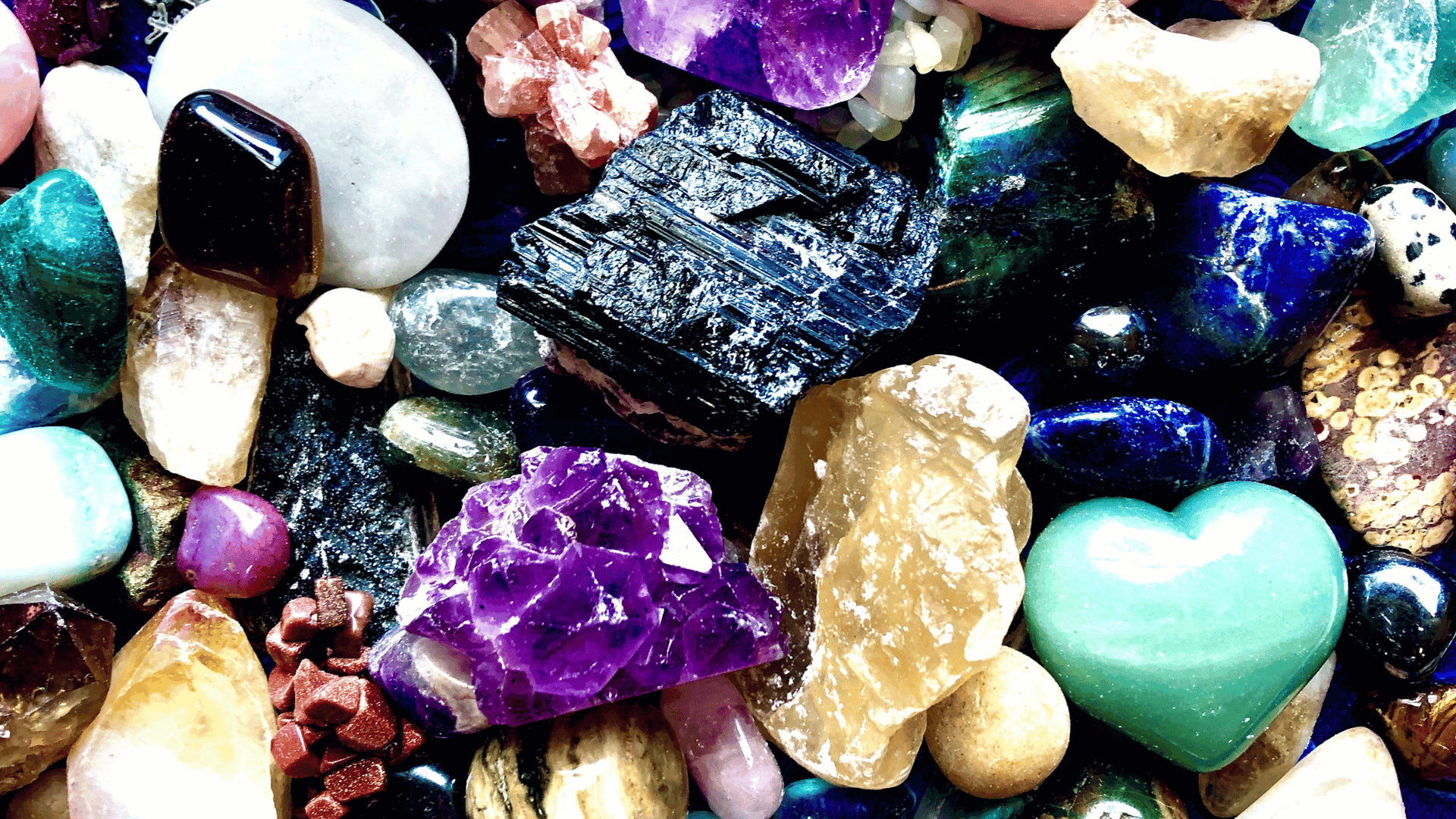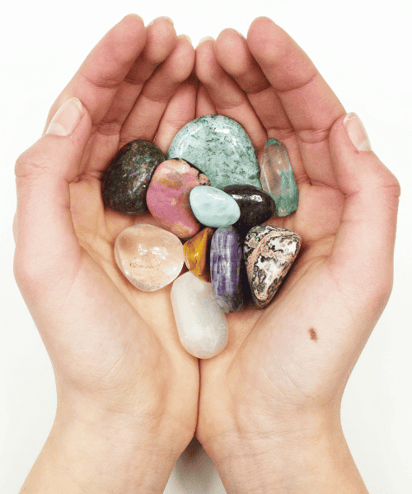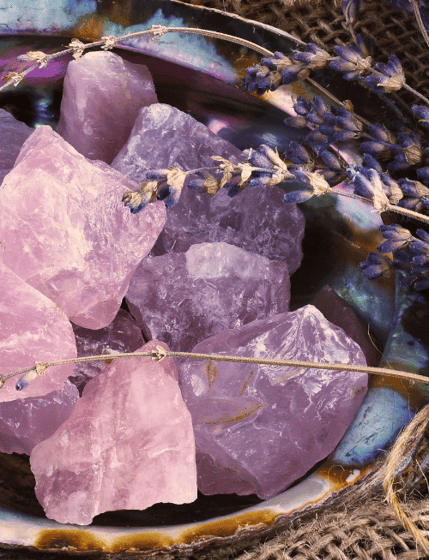The Sparkling World of Crystals for Children: A Beginner's Guide
Explore the enchanting world of crystals for children with our comprehensive guide. Learn how to safely introduce kids to the beauty and science of crystals, enhance their learning, and engage in fun activities. Perfect for parents and educators.
11/1/20238 min read

Welcome to the shimmering and colorful world of crystals. From the twinkling amethyst to the soothing rose quartz, crystals have captivated people of all ages with their natural beauty and mystique. But when it comes to children, these natural wonders offer more than just aesthetic pleasure; they can be tools for learning, imagination, and emotional well-being.
As parents, educators, or guardians, it's important to navigate the crystal realm with an awareness of safety and suitability for our little ones. In this beginner's guide, we'll explore how to introduce crystals to children in a way that is both fun and appropriate, ensuring that their experience is as enriching as it is safe.
Before we dive into the sparkling depths, let's set some ground rules. Always supervise your children when they are exploring their crystalline friends and be mindful of the size of crystals to prevent any choking hazards. With these precautions in place, we're ready to embark on a journey that promises to be as enlightening as it is enchanting!
In the following sections, we'll uncover the fascinating world of crystals, their history, and the many ways they can be integrated into your child's life. So, let's grab our explorer's hat and start this magical adventure.
Understanding Crystals
What are crystals? Crystals are more than just pretty stones; they are the marvels of mineralogy. Born from the hidden nooks of our Earth, each crystal is a unique product of temperature, pressure, and time, resulting in a symphony of geometric perfection. Their sparkling surfaces and edges are a dance of light and chemistry, a visual chorus sung by the natural world.
The history of crystals in various cultures Throughout history, crystals have held a sacred spot in the tapestry of human culture. From the ancient Egyptians who adorned their tombs with quartz, to the Chinese practice of using jade in medicine and ceremony, crystals have been revered for their beauty and purported powers. Even today, they continue to be a cultural touchstone across the globe, with every gemstone holding its own story.
How are crystals formed? The creation of a crystal is a story that spans millennia. Beneath our feet, a quiet alchemy occurs as minerals dissolved in water begin to cool and solidify. This process, called crystallisation, can happen in the depths of the Earth's crust or in the molten rock of a volcano. As the liquid cools, atoms lock together like pieces of a three-dimensional puzzle, forming crystals with a repeating pattern that's as precise as it is beautiful.
In the next section, we'll see how these geological treasures can benefit children in numerous ways, from their educational value to the simple joy they bring.


Benefits of Crystals for Children
Enhancing learning and creativity Children are naturally curious and creative, and crystals can be a wonderful tool to engage these innate qualities. The varied colors, shapes, and textures of crystals can stimulate a child’s sensory development and foster their attention to detail. When children learn about the different types of crystals and how they form, they're not just memorizing facts; they're also engaging with fundamental scientific concepts like geology and chemistry. This hands-on approach to learning can ignite a lifelong passion for the natural sciences.
Crystals for calming and comfort Just as a soft toy or a familiar blanket can offer comfort to a child, certain crystals are believed to provide a sense of calm and reassurance. For example, smooth, cool stones like blue lace agate or moonstone can be soothing to the touch. While the scientific jury is still out on the healing properties of crystals, there's no denying the placebo effect they can have on children's emotions. Holding and interacting with these stones can be a tactile way to help children manage their feelings and find a moment of tranquility.
Promoting a sense of responsibility and care Crystals can also teach children about responsibility and the importance of care. Having a crystal to look after, whether it’s keeping it clean, charged under the moonlight, or simply safe in a special place, encourages children to develop a routine and sense of duty. It's a small step towards understanding the stewardship they have over their possessions and, by extension, the environment around them.
In our following section, we'll introduce some child-friendly crystals and provide essential safety tips for incorporating these stones into your child's life.
Kid-Friendly Crystals and Essential Safety Tips
When selecting crystals for children, safety is paramount. It’s important to choose crystals that are non-toxic, without sharp edges, and large enough to not be a choking hazard. Here are some child-friendly options that are popular for their beauty and the gentle energy they are said to impart.
Rose Quartz: The Stone of Love and Peace Rose Quartz is often associated with gentleness and love, making it a favorite for children. Its soft pink hue invites a calming presence, which can be beneficial at bedtime or during moments of upset. As a symbol of love, it can also help foster empathy and heart-centered connections among siblings and friends.
Amethyst: Calming and Intuitive Amethyst, with its soothing violet color, is said to be a natural tranquilizer, promoting calm, balance, and peace. It is a great crystal for children who have trouble sleeping or who experience anxiety. It's also known to enhance creativity and imagination, making it an excellent crystal for young minds.
Tiger’s Eye: For Focus and Protection Tiger’s Eye is a grounding stone, purported to promote harmony and balance. Its captivating bands of gold and brown can also help maintain focus, which can be particularly helpful during study time. Many cultures have revered it as a protective stone, which can be comforting to children.
Clear Quartz: The Master Healer Clear Quartz is known as the "Master Healer" and can be a versatile first crystal for a child. It’s believed to amplify energy and thought, as well as the effect of other crystals. Its clear appearance is like a blank canvas, allowing children to project their own intentions and wishes onto it.
Safety tips when using crystals with children:
Always supervise children when they handle smaller crystals.
Teach children not to put crystals in their mouths.
Choose polished stones over raw ones to avoid sharp edges.
Ensure the crystals have been ethically sourced and are genuine.
In the next section, we'll explore how to make the introduction of crystals to children a magical and educational experience, with plenty of interaction and discovery.
How to Introduce Crystals to Children
Introducing crystals to children should be a magical and educational experience. It's not just about giving them a pretty stone; it's about opening up a world of learning and exploration. Here’s how you can make the experience enriching:
Interactive activities for children to learn about crystals Engage children's natural curiosity with hands-on activities. Grow your own salt or sugar crystals at home to teach them about crystalline structures. Use magnifying glasses to explore the unique features of each crystal, and discuss how they reflect light and color. Storytelling can also be a captivating way to introduce the history and lore of different crystals.
Creating a safe space for crystal exploration Create an area in your home where children can explore their crystals without risk. This could be a special table with edges where crystals won’t roll off or a comfortable corner with cushions on the floor. A dedicated space not only makes it safer but also more special for a child.
Teaching children to cleanse and care for their crystals Show children how to care for their crystals by cleansing and "charging" them. This can be as simple as wiping them with a damp cloth to keep them dust-free. For charging, you can encourage children to leave their crystals out in sunlight or moonlight, explaining how these cycles can symbolize renewal—a concept that can be applied to many areas of life.
In the next section, we'll provide some creative and fun crystal-related activities and crafts that are perfect for children to enjoy while learning about these natural wonders.


Fun Crystal Activities and Crafts for Kids
Crystals can be much more than objects of admiration—they can also be central to creative and educational activities. Here are some engaging crystal activities and crafts that can provide hours of fun and learning for children.
Making a crystal garden A crystal garden is a wonderful project that blends science and art. Children can grow their own crystal garden using a mixture of household ingredients like salt, ammonia, and food coloring. They’ll be amazed as they watch their garden bloom with vibrant, crystal "plants."
Crystal treasure hunts Organise a treasure hunt where children can search for hidden crystals around your home or garden. Each found crystal can come with a fact card that provides information about the crystal's properties, origin, or historical uses. This not only makes the activity exciting but also educational.
DIY crystal jewellery for kids With supervision, children can create their own jewellery from larger, polished crystals. Stringing beads to make necklaces or bracelets can improve their fine motor skills and allows them to express their creativity. Plus, they get to wear their artwork and show it off to friends and family.
Crystal storytelling and play Encourage children to create stories about their crystals. What magical powers do they hold? What ancient secrets do they contain? This can be a group activity where each child contributes a part of the story, promoting teamwork and imaginative play.
Painting and decorating crystals While many crystals are beautiful on their own, kids can enjoy painting and decorating stones, especially the less sparkly ones. Use non-toxic paint and adornments to turn crystals into vibrant works of art.
Considerations and Cautions
While it's wonderful to see children excited about crystals, it's essential to approach this hobby with the right considerations in mind. The next section will discuss some important cautions to keep the experience safe and positive.
Considerations and Cautions When Choosing Crystals for Children
As we integrate crystals into children's activities, it's crucial to approach this practice with mindfulness and informed caution. Here's what you need to keep in mind to ensure a positive and safe experience.
Choking hazards and appropriate age for crystal use Crystals, especially small ones, can pose a choking risk for younger children. Always select larger, tumbled stones for children's use and avoid small, detachable parts. It's advisable to introduce crystals to children who are old enough to understand they are not for consumption—typically around the age of five and above.
Myth vs. reality: What crystals can and can't do It's essential to teach children the difference between the mythic lore of crystals and their real-world applications. While many cultures attribute healing properties to crystals, it’s important to convey that crystals are not a substitute for medical advice or treatment. Emphasise the beauty and uniqueness of each stone, rather than unsupported claims of their powers.
How to spot fake crystals Educate children about the authenticity of crystals. The market is flooded with imitation stones that may be made from glass or plastic. Learning to identify real crystals can be an educational experience in itself, fostering critical thinking and attention to detail. Teach them simple tests, like checking for air bubbles (indicative of glass) or performing a scratch test to verify hardness.
Environmental impact and ethical sourcing Discuss the environmental impact of mining crystals and the importance of ethical sourcing. Encourage children to think about where their crystals come from and the importance of preserving natural habitats. Opt for crystals that are ethically harvested and sold by reputable vendors.
Embracing the Sparkle with Mindfulness and Joy
As we reach the end of our crystalline journey, it’s clear that crystals can open up a world of wonder for children. They are not just stones; they are storytellers, teachers, and companions in play. Crystals can ignite a child's imagination, teach them about the natural world, and even provide comfort.
However, as with any adventure, it's essential to proceed with care. We must guide our young explorers with a gentle hand, ensuring their safety and instilling in them a respect for the environment from which these treasures come. The true value of crystals lies not in their purported mystical properties but in the beauty, curiosity, and responsibility they can inspire in a child’s heart and mind.
We invite you to continue this journey, exploring the many facets of crystals with your children. Encourage them to ask questions, seek knowledge, and above all, to find joy in the natural wonders that crystals represent. Share your stories and experiences with us and become a part of a community that celebrates the sparkle of life, one crystal at a time.


